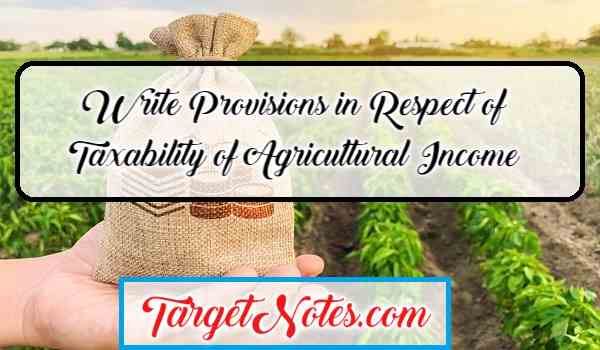
Contents
Taxability of Agricultural Income
Agricultural income as defined under the Act, has been exempted from income-tax.
But in case of individual, HUF, AOP/BOI or artificial juridical person agricultural income is taken into account while calculating tax.
Scheme of Partial Integration of Non-Agricultural Income with Agricultural Income.
The scheme of partial integration of non-agricultural income with agricultural income is applicable if a few conditions are satisfied.
It is applicable, if the following conditions are satisfied –
Condition 1: The taxpayer is an individual, a Hindu undivided family, a body of individuals, an association of persons or an artificial juridical person.
Condition 2: The taxpayer has non-agricultural income exceeding the amount of exemption limit li.e., Rs. 2,50,000 (in the case of a resident women/men below 60 years), Rs. 3,00,000 in the case of a resident senior citizen 60 years or more) and Rs. 2,50,000 [in case of any other individual or every HUF for the assessment year 2020-21]. In case of above 80 years. Rs 5,00,000.
Condition 3: The agricultural income of the taxpayer exceeds Rs. 5,000.
If the three conditions are satisfied, then the scheme of partial integration of tax on non-agricultural income with income derived from agriculture is applicable. It may be noted that the aforesaid scheme is not applicable in the case of a firm, company, co-operative society etc.
Computation of Tax in Cases Covered by the Scheme –
In cases covered by the scheme, income tax will be computed for the assessment year 2020-21 in the following manner:
Step 1 – Net agricultural income is to be computed as if it were income chargeable to income-tax.
Step 2 – Agricultural and non-agricultural income of the assesse will then be aggregated and income-tax is calculated on the aggregate income as if such aggregate income were the total income,
Step 3- The net agricultural income will then be increased by the amount of exemption limit (i.e., the first slab of income on which tax is charged at nil rate) and income tax as calculated on net agricultural income, so increased, as if such income was the total income of the assesse.
Step 4- The amount of income tax determined at step 2 will be reduced by the amount of income-tax determined under step 3.
Step 5 – Rebate under Section 87A shall be deducted Rs. 12,500. If total income of assesse is less than Rs. 5,00,000.
Step 6 – Find out the balance. Add surcharge and education cess.
Step 7- The amount so arrived will be total income-tax payable by the assesse.
- Meaning and Types of commercial risks
- How can we minimize foreign trade risks?
- What are Arbitrage operations?
- Difference between Spot Market and Forward Market
- What is spot exchange?
- Agency agreement: Meaning, Features and Advantages
- Functions of Foreign Exchange markets
- structure of Foreign exchange markets
- Stability of Exchange Rate- Facts, significance, method, theories & warning
- Main Items Debit and Credit sides of the Balance of Payment
- Differences between Educational Administration and General Administration
- General Administration and Educational Administration
- Nature of Educational Administration
- Scope of School Administration
- Definitions of Educational Administration by Different Scholars
- Definitions of Educational Administration by Different Scholars
- Meaning of Educational Administration
- Principles of School Organisation and Administration
- Aims and Objectives of School Organisation
- School Organisation | Meaning of School Organisation | Meaning of School |Meaning of Organisation
Disclaimer






